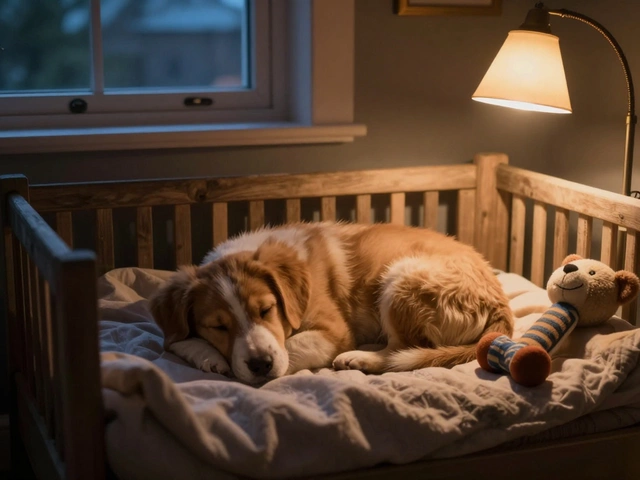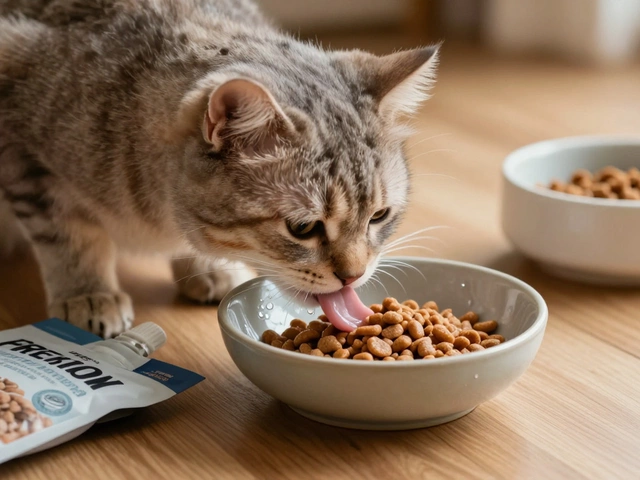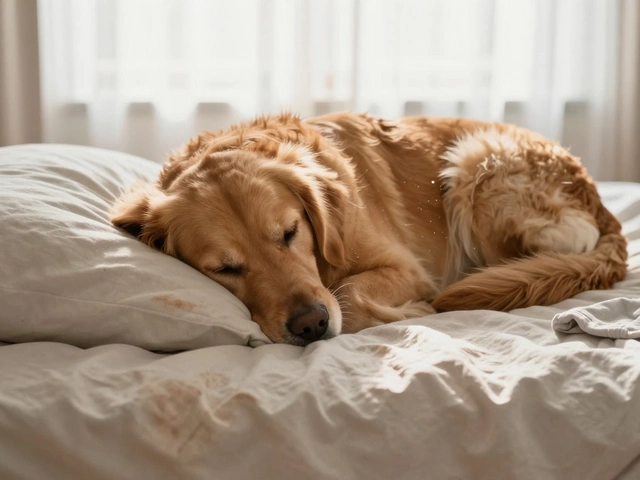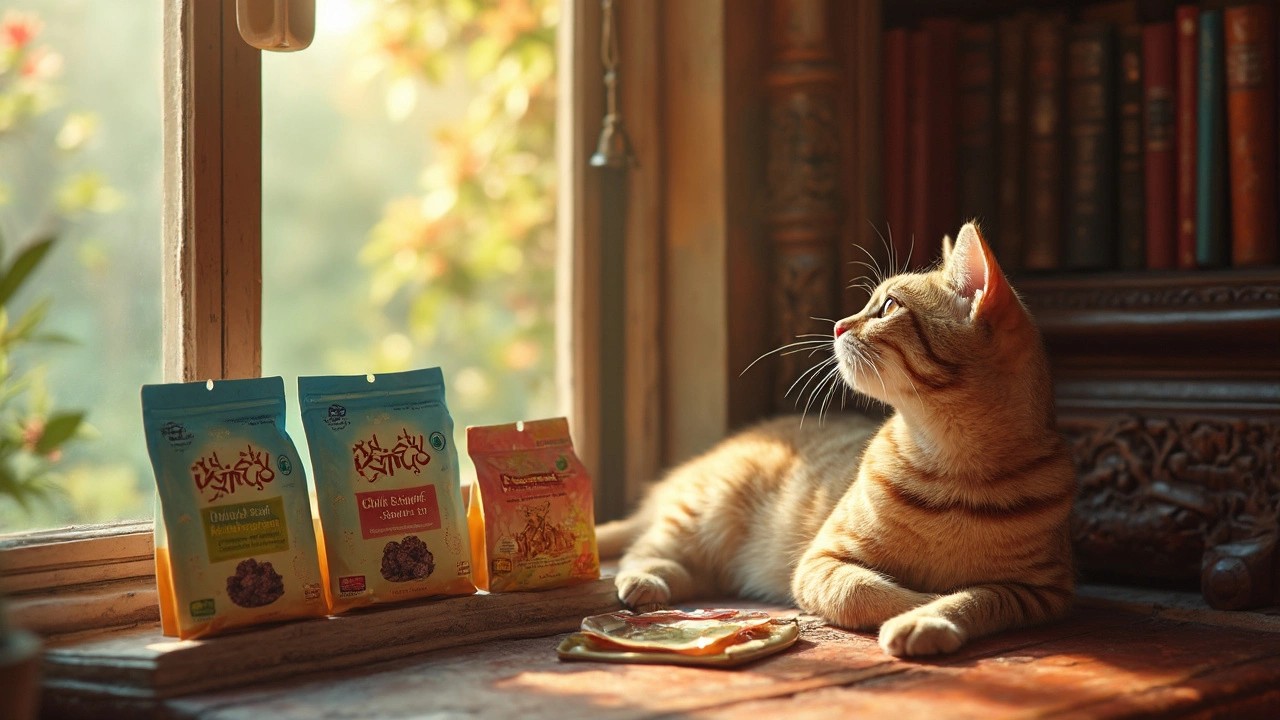
Alright, cat lovers, let's talk about something that's been buzzing around the pet world: can your kitty survive on just dry food? Spoiler: It's a bit complicated. Cats are known for being low-maintenance, but when it comes to their diet, things can get tricky.
Cats are obligate carnivores, meaning their bodies are built to get nutrients from meat. While kibble has its perks—like being convenient and good for the teeth—it's not always the whole package. It turns out our feline friends need more than just a crunchy bite to thrive.
Here's a curveball: hydration. Cats don't naturally drink water as much as they should, which is why their diet needs to help with hydration. Dry food alone might leave them a bit parched. So, where does that leave us? Balancing their diet with moist food or ensuring they sip enough water throughout the day is crucial.
- Feline Nutritional Needs
- Pros and Cons of Dry Food
- Hydration and Health
- Balanced Diet Tips
- Making the Right Choice
Feline Nutritional Needs
Our cats are basically mini-tigers prowling around our living rooms, and just like their wild cousins, they have unique nutritional needs. First up on the menu: protein. Because cats are obligate carnivores, their diet has to be rich in proteins sourced from meat. This helps maintain their strong muscles and energy levels.
On to the second crucial component: fat. It's not just about keeping your cat's fur shiny. Fats are a significant energy source, helping with the absorption of vitamins. And speaking of vitamins, there are certain ones, like A and taurine, that cats can only get from animal-based sources. Ever wonder why cats can see so well in the dark and dodge furniture? Yep, it's those vitamins at work.
"Cats need more than twice as much protein as dogs do to stay healthy," says Dr. Jane Doe, a renowned veterinary nutritionist.
Hydration and Fiber
Water: the unsung hero of a cat's diet. Cats aren't the best at feeling thirst, so a lot of their hydration should come from their food. While dry food can be great in other ways, it's pretty low on water content. Mixing it up with other food sources can help.
Fiber, although not needed in large quantities, does play a role. It aids digestion and can even help prevent hairballs. Talk about value from the little things!
Here's a quick look at what a typical feline diet might look like:
| Nutrient | Percentage of Diet |
|---|---|
| Protein | 35-45% |
| Fats | 20-30% |
| Carbohydrates | 10-15% |
So, if you're shaking your head wondering if your cat's dry food meets all these needs, it might be time for them to have a menu makeover. Think of their meals as a balance between convenience and nutrition.
Pros and Cons of Dry Food
Choosing the right food for your cat can feel like a big decision. Let's break down the ups and downs of serving only dry food to your furry buddy. Understanding these can help you make the best choice for them!
Pros of Dry Food
- Convenience: Dry food is super easy to store, scoop, and portion. You can leave it out for your cat during the day without it going bad, which is handy if you're often away from home.
- Cost-Effective: Generally, dry food is cheaper than wet food. It can be a great option if you're looking to save some bucks while still providing for your pet.
- Dental Health: The crunchy texture can help keep your cat's teeth clean by reducing plaque and tartar buildup.
Cons of Dry Food
- Lack of Moisture: Dry food has significantly less moisture than wet food. Cats, who aren't usually big drinkers, might not get enough hydration if they're only munching on kibbles.
- Lower Nutrient Content: While dry food is balanced, it might not always hit all the nutritional sweet spots that your feline's carnivorous diet requires.
- Potential Weight Gain: It's super easy to overfeed with dry food since kibble is calorie-dense and cats generally love getting seconds.
Here's a quick breakdown of nutrients in typical dry food versus wet food:
| Nutrient | Dry Food | Wet Food |
|---|---|---|
| Moisture (%) | 8-10 | 75-78 |
| Protein (%) | 30-38 | 7-12 |
| Fat (%) | 10-25 | 2.5-5 |
Every cat is unique, so weighing these pros and cons can help tailor your decision to your pet's needs. Maybe a combo diet could offer the best of both worlds!
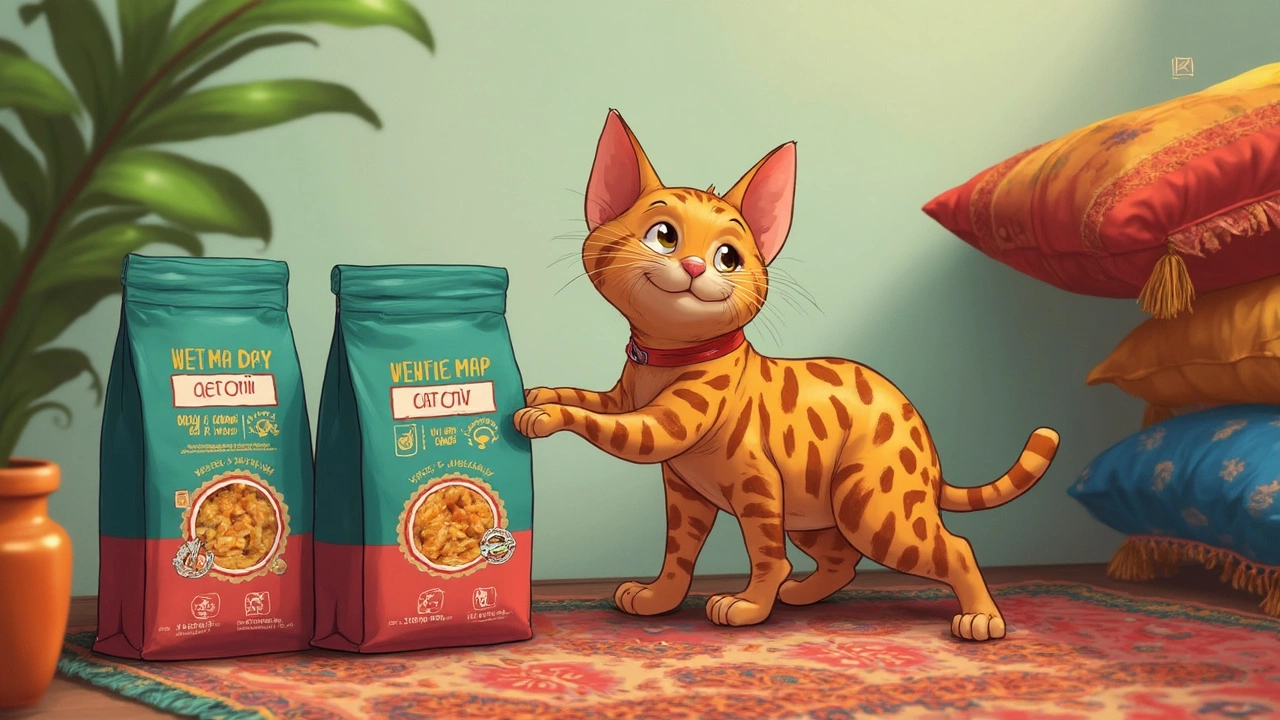
Hydration and Health
Alright, let's get to the nitty-gritty of why hydration is such a big deal for our feline companions. Cats have evolved from desert animals, which means they're not naturally big water drinkers. Instead, they've traditionally gotten their fluids from their prey—think juicy mice or birds. This makes it a bit tricky when they're on a dry diet.
Dehydration can sneak up on cats if they're on solely dry food. It's easy to think they're getting enough moisture if they've got a water bowl nearby, but reality says otherwise. When they're used to getting water from food, a bowl of kibble may leave them a bit parched.
Watch for Dehydration Signs
So, how can you tell if your cat needs more water? Look for signs like dry gums, sunken eyes, or skin tenting (pulling up their skin and seeing how quickly it settles back). Make sure you're on top of this, as chronic dehydration can lead to kidney problems and urinary tract issues.
Keeping Your Cat Hydrated
- Invest in a cat fountain. Cats love running water—it's a natural draw for them, and it encourages them to drink more.
- Combine dry food with wet food. This combo gives them extra moisture from their meals—kind of like sneaking veggies into a fussy eater's dinner!
- Regularly check and refill their water bowl. Fresher water makes them more inclined to take a drink.
Remember, a bit of extra effort in keeping your cat hydrated goes a long way in preserving their health. A good balance of moisture from food and regular water breaks keeps them feeling good and purring along happily.
Balanced Diet Tips
Balancing your cat's diet doesn't need to be a daunting task. The goal is to ensure they get all the nutrients they crave from their meat-loving nature. Here are some practical tips to keep your furry friend thriving on the right cat nutrition.
1. Mix it Up
Feeding just dry food can be okay, but consider adding some wet food into the mix. Wet food not only adds much-needed moisture to their diet but also a variety of textures and flavors that cats love.
2. Know the Ingredients
Look for foods where animal protein tops the ingredient list. Avoid fillers like cornmeal and soy. High-quality cat food will cater to their carnivorous needs, providing essential proteins and fats.
3. Keep That Water Flowing
Cats tend to be low water drinkers, so it’s crucial to encourage hydration. Get creative—a water fountain might spark their interest more than a regular bowl. Monitor their drinking habits and adjust as needed.
4. Portion Control Matters
Check feeding guidelines based on your cat's weight and activity level. Overfeeding can lead to obesity, so measure portions carefully to make sure they stay fit and active.
5. Regular Check-Ups
Don’t forget to schedule regular vet visits. A professional can provide insights into specific dietary adjustments based on any unique health concerns your kitty might have.
Balancing your cat's diet with the right mix of dry and other food, proper ingredients, and adequate hydration might take a little effort at first, but seeing your pet healthy and happy is totally worth it!
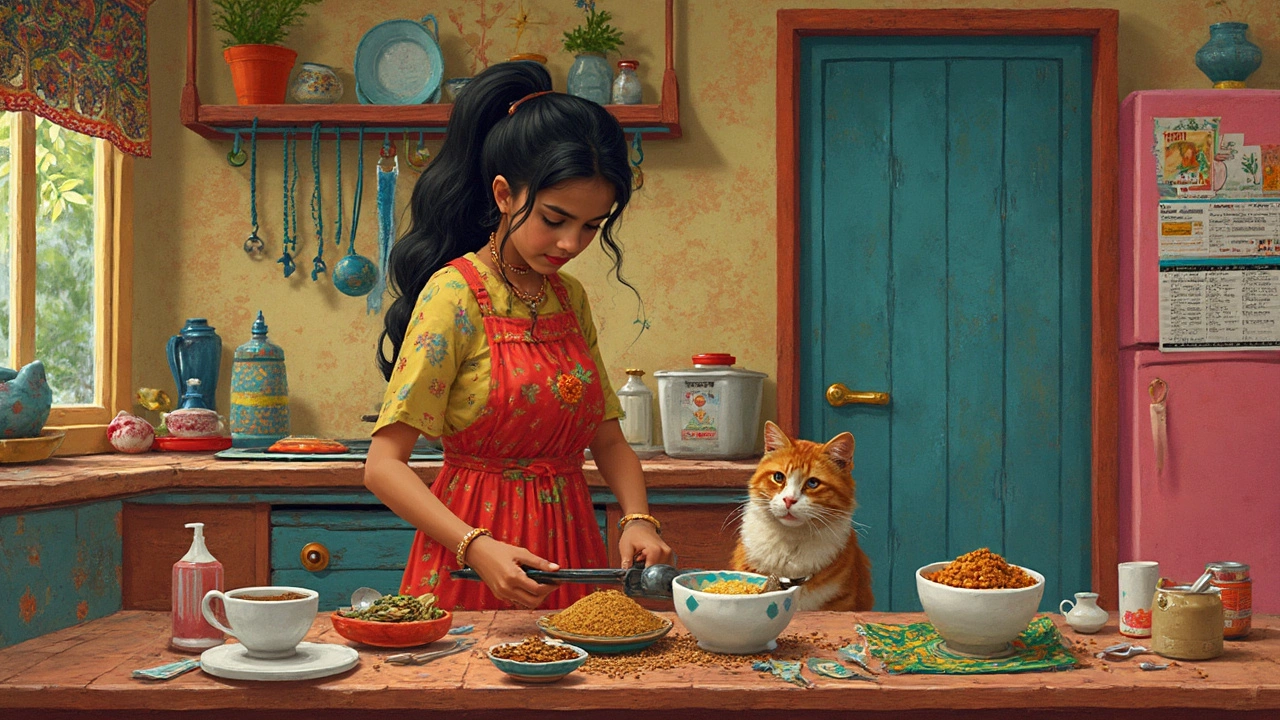
Making the Right Choice
Choosing the best diet for your cat can feel like an epic quest. With so much info swirling around, it's easy to get lost. But don't worry, here's the scoop on how to navigate the world of cat food without a hitch.
Understand Nutritional Labels
First off, peek at those labels. It's crucial to know what your furball's munching on. Look for clear info on protein, fat, and fiber content. Cats need high levels of protein—more than dogs—so aim for food that lists meat as the first ingredient.
Veterinarian Recommendations
Your vet is your best buddy when it comes to picking the right chow. They can offer guidance based on your cat's age, health, and lifestyle. Don't hesitate to ask them if a dry food-only diet suits your cat or if you should mix it up with some wet food.
Balancing Cost and Quality
We know it can sometimes boil down to budget. While some premium brands are pricey, they might offer higher-quality ingredients. Evaluate the cost per feeding rather than the face value of the bag.
Observing Your Cat's Health
- Maintain a Sharp Eye: Watch for signs like changes in weight, coat condition, and energy levels.
- Regular Vet Visits: Ensure everything's on track health-wise.
These indicators might tip you off if the diet needs a tweak.
| Factor | Importance |
|---|---|
| Protein Content | High |
| Cost vs Quality | Medium |
| Hydration Needs | High |
In the end, choosing the right diet is about knowing your cat's needs and keeping an eye on their overall health. Don't sweat it too much; with a bit of guidance and observation, you'll find the perfect food that'll have your kitty purring with delight.


